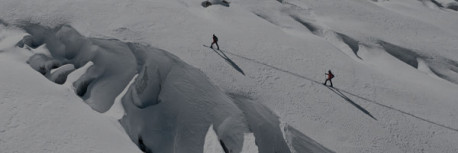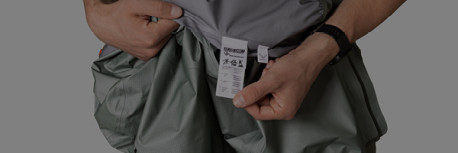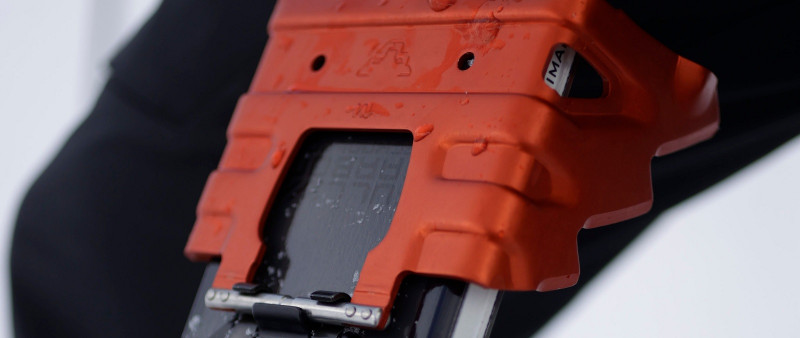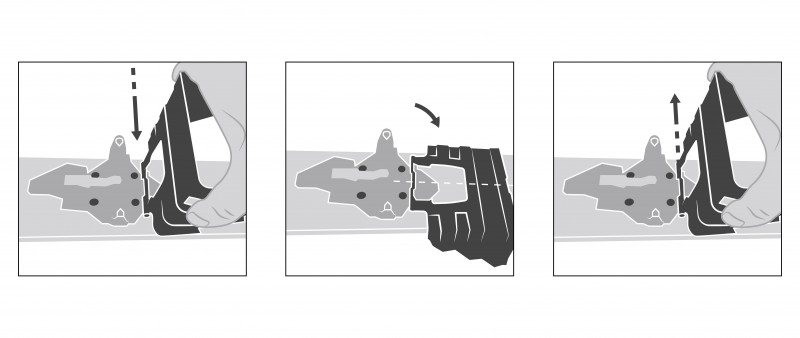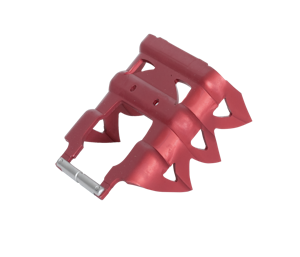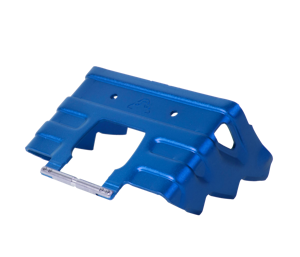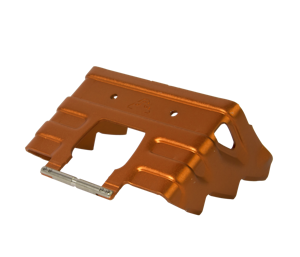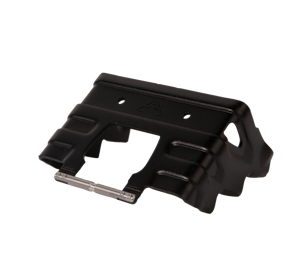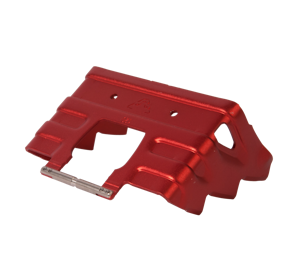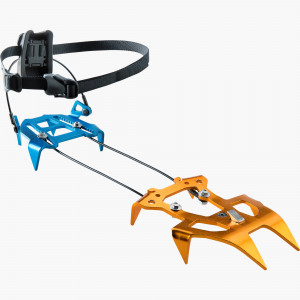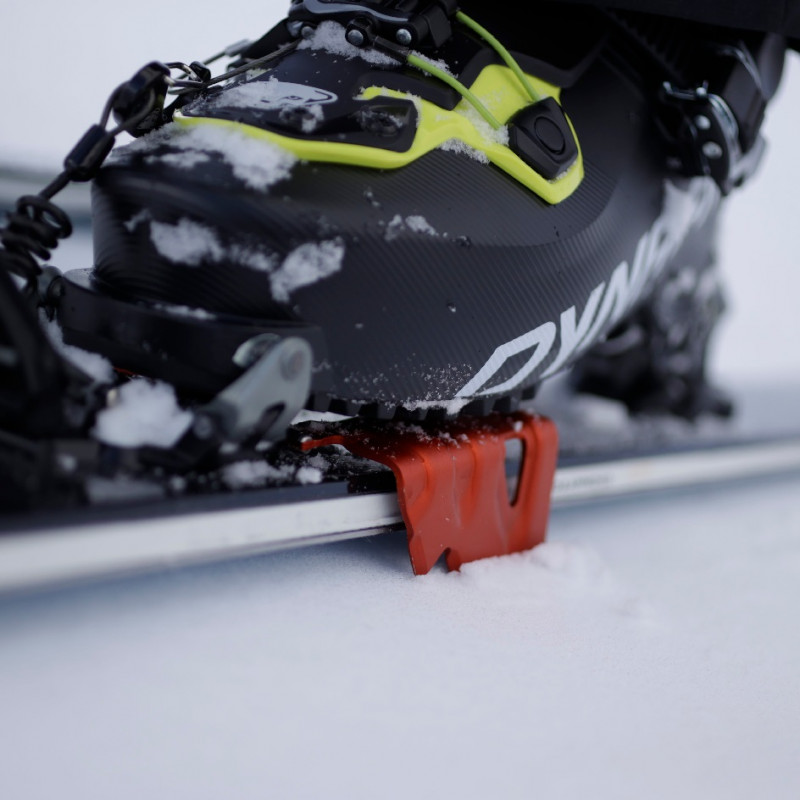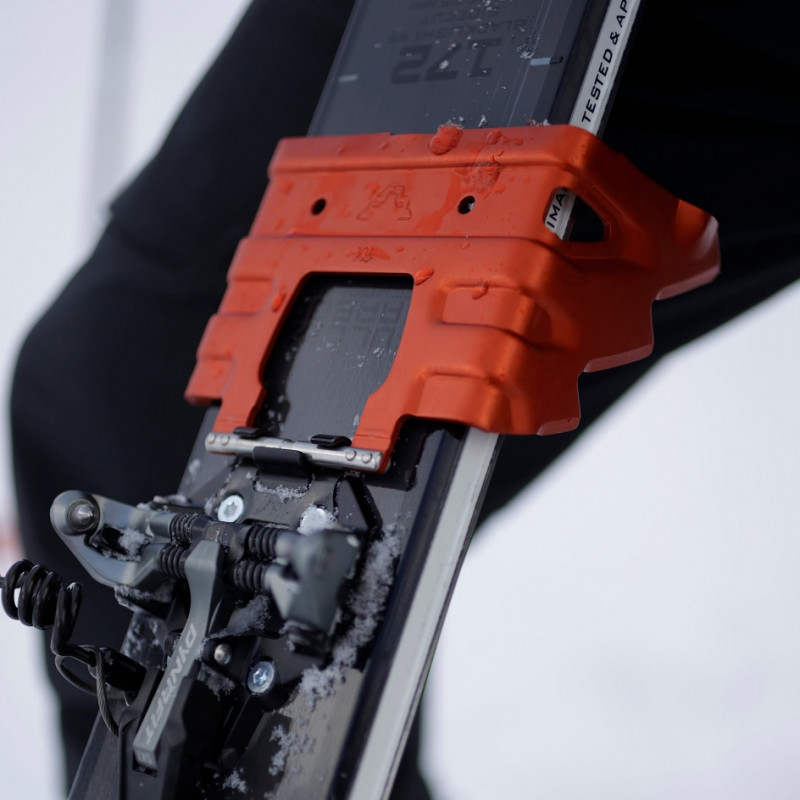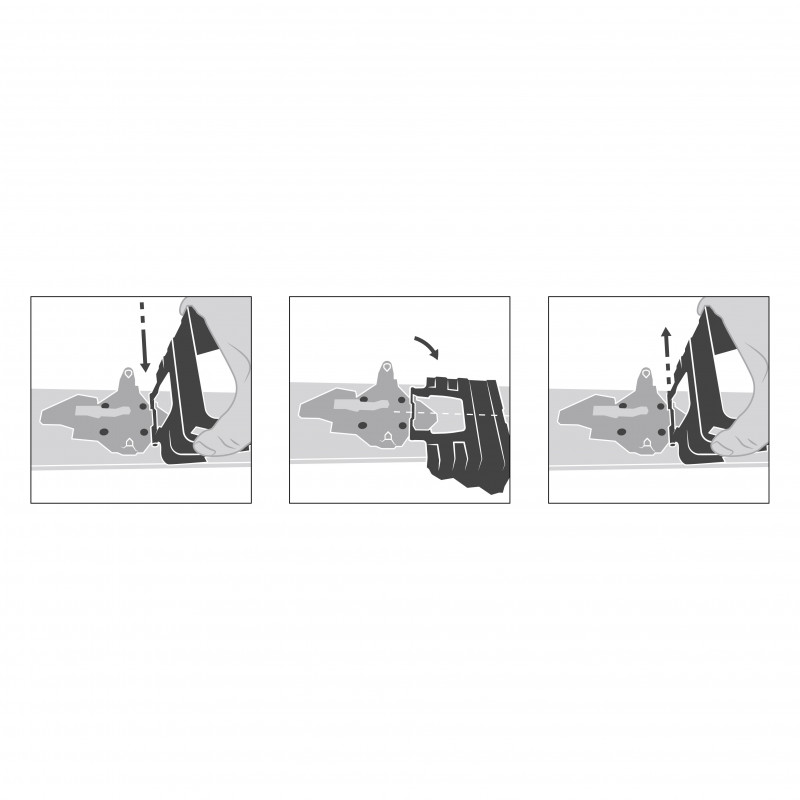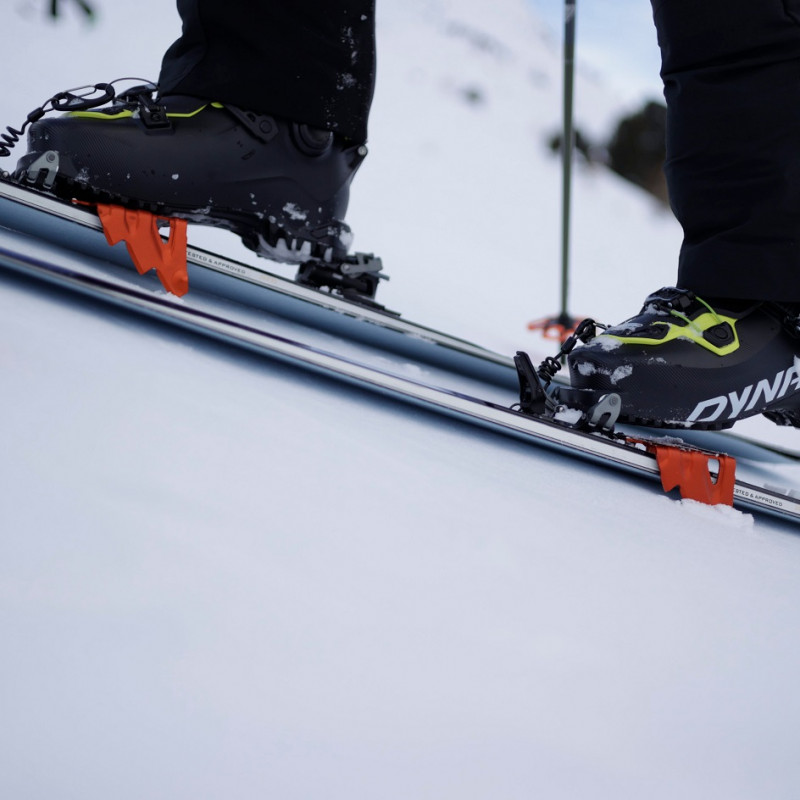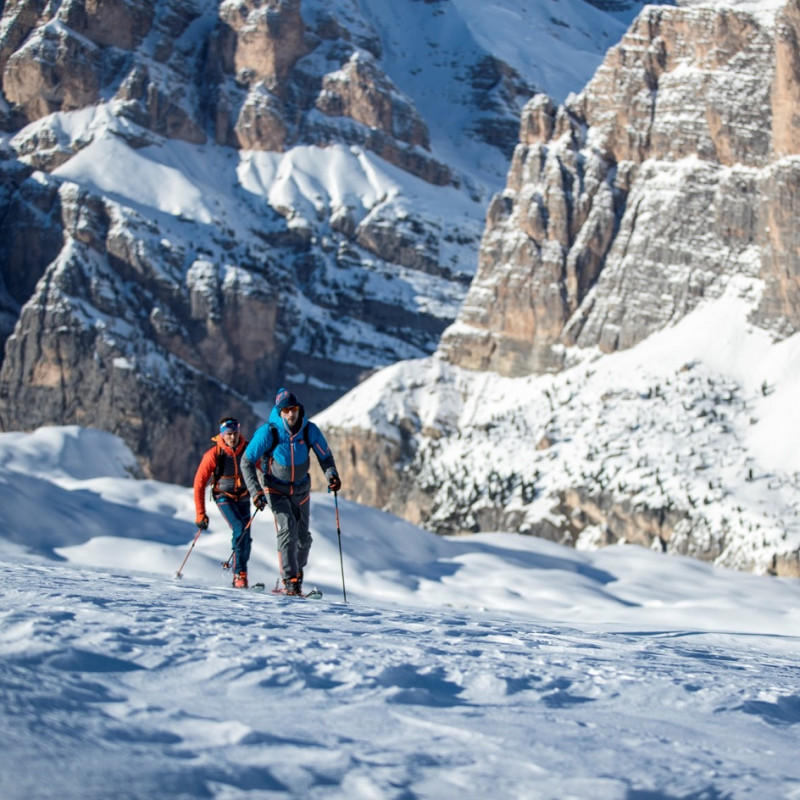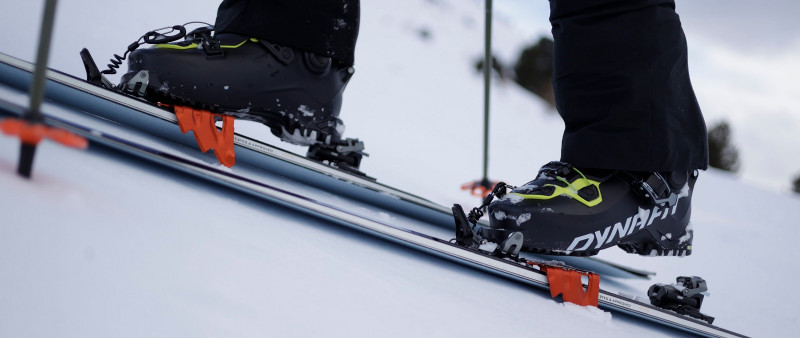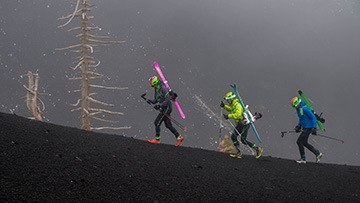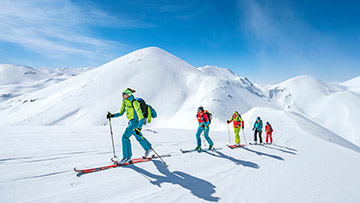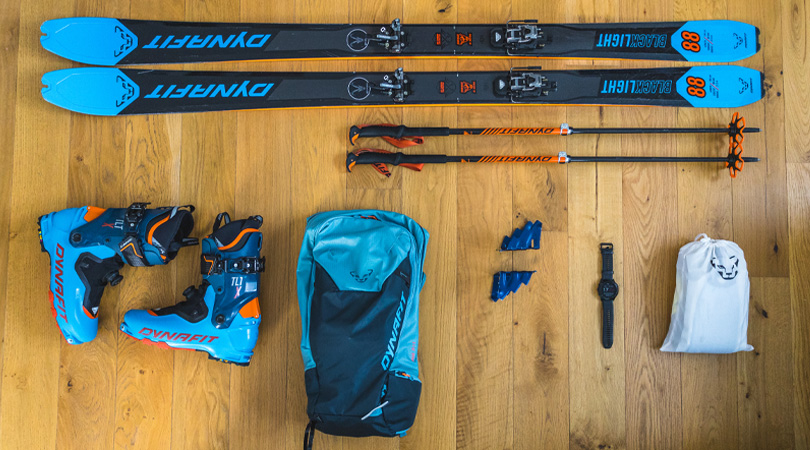Ski crampons: The traction device for ski touring enthusiasts
What mountaineering crampons do when climbing, is what ski crampons do on a ski tour. Cleats are an essential part of ski touring equipment although they are often given very little attention. We have all the answers for you about why ski crampons are so useful, when they are used, and what you need to pay attention to during setup, fitting and use.
What are ski crampons?
How and when to use ski crampons
Ski crampons are used when ski skins don’t offer enough resistance on the snow’s surface. On spring tours, when the snow melts during the day and then freezes over again at night, a crust develops, which makes it nearly impossible for skins to get proper traction.
Ski tourers can easily slip on icy crossings or mountain ridges, which is where ski crampons would serve you well and enormously increase safety. When attached to the bindings, the crampons press into the snow every time you take a step, which means that they don’t let the ski slip backward or to the side. So, with the crampons pressing into the hard press snow, this will give you relief knowing that you can stand securely on hardpack surfaces. When you unweight the ski with the next step, the crampon releases from the snow and the ski can be pulled forward again. Comfort while walking is slightly impaired by crampons since it needs to be “schlepped along,” so to speak. However, the enormous advantage in safety clearly outweighs this disadvantage. We highly suggest that you carry crampons in your pack on every tour. Ultimately, you never really know what kind of conditions you will encounter when out, and the extra 100 grams or so in your backpack will hardly be noticeable.
Compatibility: Finding the right ski crampon
The best crampons won’t do you any good if they don’t fit properly. There are tons of different ski tour bindings on the market, and just as many ski crampons and attachment systems to choose from. If you are using DYNAFIT bindings, only original ski crampons from DYNAFIT may be used, otherwise compatibility cannot be ensured.
It is not only essential that bindings and crampons are compatible, but also that the you have the right ski width. If crampons are too narrow, they won’t fit on the ski, if they are too wide, the crampon will easily slip back and forth. We recommend choosing your crampon width at least 5 mm wider than the waist of your ski. For example, a ski with a waist of 88 mm should use ski crampons that are 100 mm wide. We highly recommend checking that your binding, crampon and ski compatibility is correct before you head out for a tour.
How are crampons mounted?
Trying to mount ski crampons for the first time can be a bit tough. We recommend that you try installing them at home before your first tour. On snow, always put on crampons before the ascent gets too steep and on flat terrain, you can put them on at any time in a relaxed and safe manner.
To install crampons with a binding, you must first step out of the skis, one after the other. DYNAFIT crampons can also be installed when you are in the bindings, but that demands quite a bit of skill and balance and is only recommended for advanced users.
To attach and secure crampons, follow these steps:
1. Ski crampons should be pushed into the crampon slot on the toe piece in a vertical position.
2. Lock the crampon securely so it is at the middle of the ski before it is folded down flat.
To take them off, follow these steps in reverse.
What you need to pay attention to when walking with ski crampons
Ski crampons aren’t a universal remedy when it comes to difficult conditions. On very steep terrain it is more advisable to unbuckle and step out of your skis and change to proper boot traction devices. In particular, ski crampons offer good lateral traction but they do hit their limits at some point. So, choose your route wisely and try and get a good idea of the type of terrian you will be experiencing. The following points should be considered at all times when walking with ski crampons:
// Select a flat touring mode to be able to take full advantage of the cleats’ abilities.
// Never use DYNAFIT ski crampons with either the second or the highest riser. When trying to do so, they cannot properly grip or they cannot grab deep enough into the snow.
// Only use ski crampons on snow, never on rocks, mixed terrain or on ice sheets.
// Never ski with crampons installed in your binding! Even on small transitional sections!
In sum: This is what ski crampons can do
Ski crampons are extremely good aids that can significantly increase your safety in frozen or icy snow conditions. Upon purchasing, pay careful attention to compatibility with the binding and choose a width that corresponds to your ski waist. Before your first tour, familiarize yourself with how to mount and setup your crampons and bindings.
We recommend always carrying ski crampons in your pack, especially in the springtime. Be sure that you don’t wait too long into the tour to put them on, the flatter the riser level, the better that crampons can grab into the snow.
Ski crampons are claw-like devices made of metal – usually aluminum – that are used in conjunction with a ski tour binding. They make climbing on hard crust or icy surfaces easier and lend additional safety. Similar to mountaineering cleats, there are sharp points on the side of the crampon that are pushed into the snow when walking, which prevents sliding backward.





